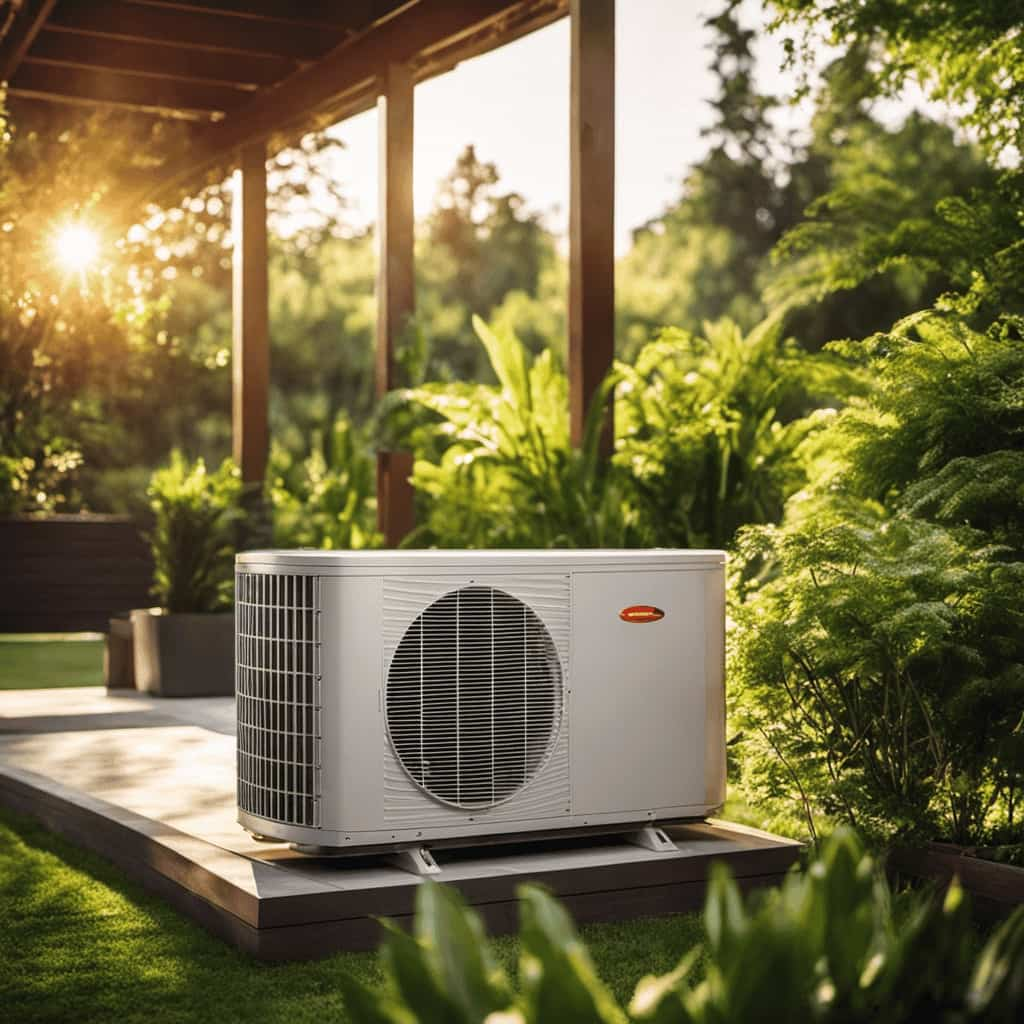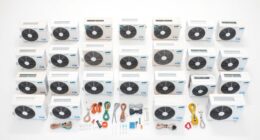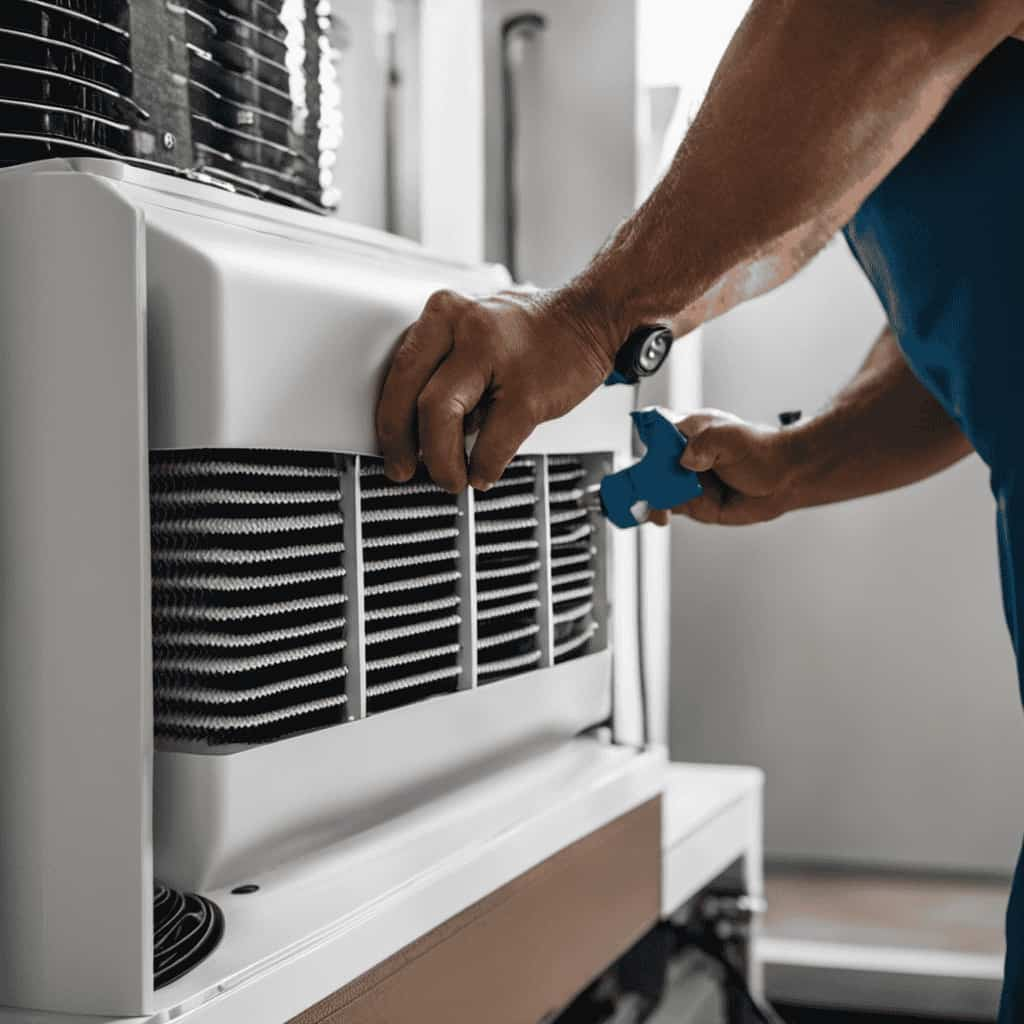
Tired of shivering in the cold winter and sweating in the hot summer? Good news is on the way: choosing the perfect energy-efficient heat pump can be simple!
In this article, we’ll guide you through the maze of efficiency ratings, help you evaluate the important factors, and provide you with the knowledge you need to make an informed decision.
So, sit back, relax, and get ready to bring innovation and comfort into your home!
Key Takeaways
- Understanding heat pump efficiency ratings, such as SEER and HSPF, is crucial for comparing and choosing the best heat pump.
- Energy-saving features and technology, such as smart thermostat integration and variable speed technology, can significantly increase energy efficiency.
- Proper sizing and capacity, determined through load calculations, are essential for optimal energy efficiency.
- When comparing different heat pump types, it’s important to consider the SEER and HSPF ratings as well as the energy efficiency benefits of each type.
Understanding Heat Pump Efficiency Ratings
We need to understand heat pump efficiency ratings to make the best choice for our energy-efficient heat pump.
Heat pump efficiency benefits us by reducing our energy consumption and lowering our utility bills. By improving heat pump performance, we can achieve greater comfort in our homes while also being environmentally conscious.
The efficiency rating of a heat pump is determined by its Seasonal Energy Efficiency Ratio (SEER) and Heating Seasonal Performance Factor (HSPF). SEER measures the cooling efficiency of the heat pump, while HSPF measures the heating efficiency.
A higher SEER and HSPF rating indicates a more efficient heat pump. Understanding these ratings allows us to compare different models and choose the one that best suits our needs.
Now, let’s move on to evaluating SEER and HSPF ratings to further narrow down our options.
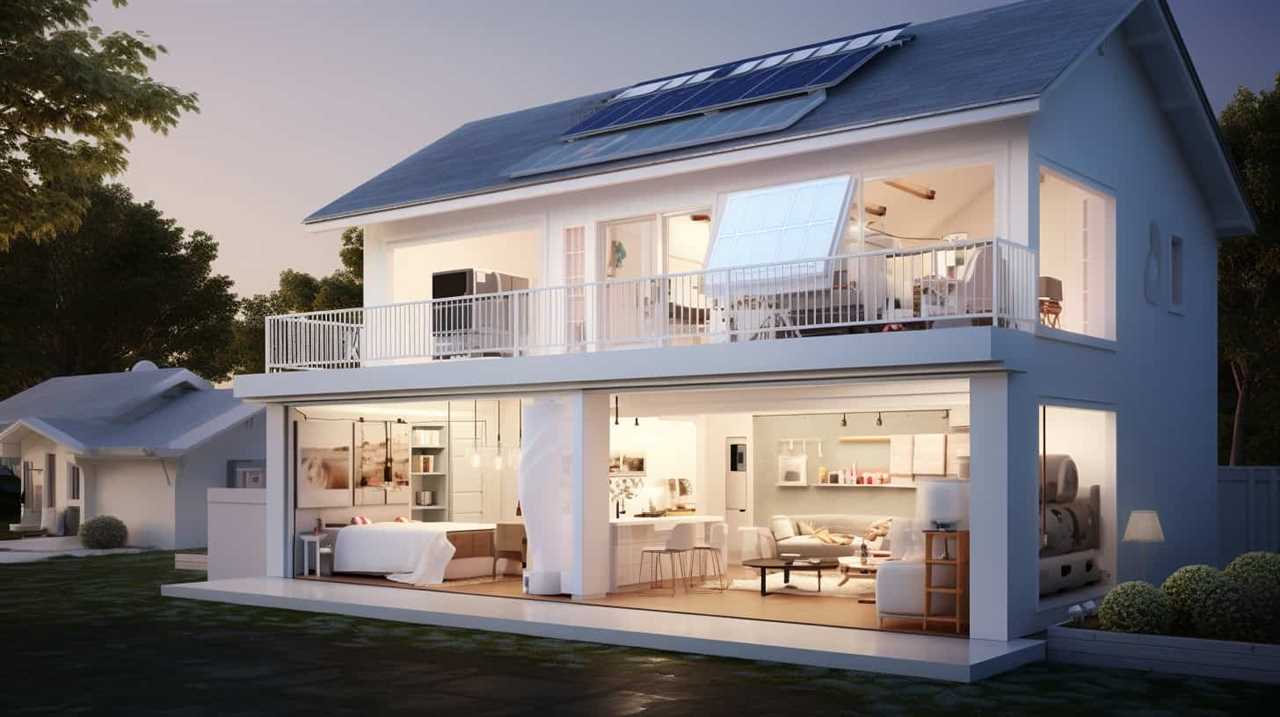
Evaluating SEER and HSPF Ratings
When evaluating SEER and HSPF ratings, it’s important to consider factors such as energy efficiency and heating performance. These ratings provide valuable information about the efficiency and effectiveness of a heat pump. Here are three key considerations to keep in mind when evaluating these ratings:
-
Energy Efficiency: The SEER (Seasonal Energy Efficiency Ratio) rating measures the cooling efficiency of a heat pump, while the HSPF (Heating Seasonal Performance Factor) rating measures its heating efficiency. Higher SEER and HSPF ratings indicate greater energy efficiency, resulting in lower energy consumption and cost savings over time.
-
Evaluating Installation Options: Proper installation is crucial for maximizing the efficiency and performance of a heat pump. Consider consulting with a professional HVAC technician to ensure that the system is installed correctly and meets the manufacturer’s specifications.
-
Maintenance Requirements: Regular maintenance is essential to keep the heat pump operating at optimal efficiency. Evaluate the manufacturer’s recommended maintenance procedures and consider the time and effort required to maintain the unit.
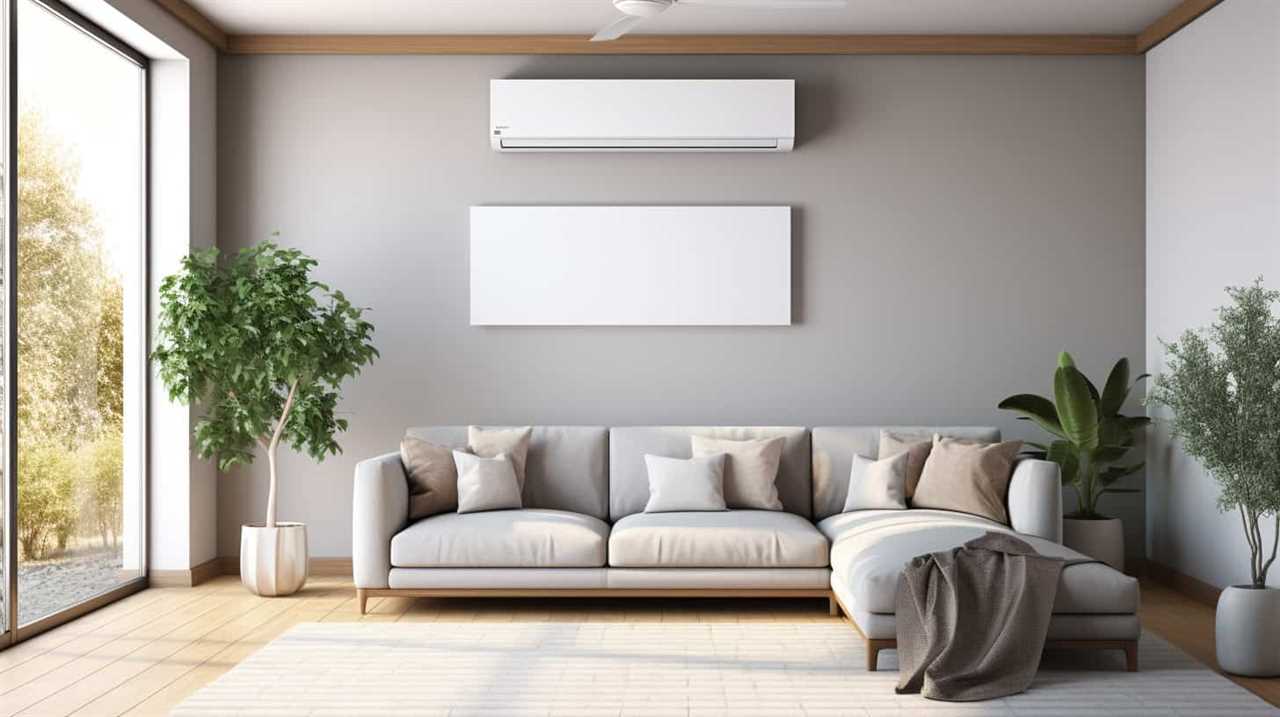
By evaluating these factors, you can make an informed decision when choosing a heat pump that meets your energy efficiency and heating performance needs.
In the subsequent section, we’ll discuss the importance of considering energy-saving features and technology to further enhance the efficiency of your heat pump.
Considering Energy-saving Features and Technology
One important factor to consider is the presence of energy-saving features and technology in the heat pump. These features and technologies are designed to optimize energy usage and increase efficiency, ultimately reducing energy consumption and saving you money.
Two key energy-saving features to look for are smart thermostat integration and variable speed technology.

Smart thermostat integration allows your heat pump to communicate with your thermostat, enabling more precise temperature control and optimizing energy usage based on your preferences and schedule. This integration ensures that the heat pump operates at the most energy-efficient settings, resulting in significant energy savings.
Variable speed technology, on the other hand, allows the heat pump to adjust its speed and output based on the heating or cooling demand. This technology ensures that the heat pump isn’t running at full capacity when it isn’t necessary, reducing energy waste and increasing overall efficiency.
By incorporating these energy-saving features and technologies into your heat pump, you can maximize energy efficiency and reduce your carbon footprint.
In the next section, we’ll discuss sizing and capacity considerations for further enhancing energy efficiency.
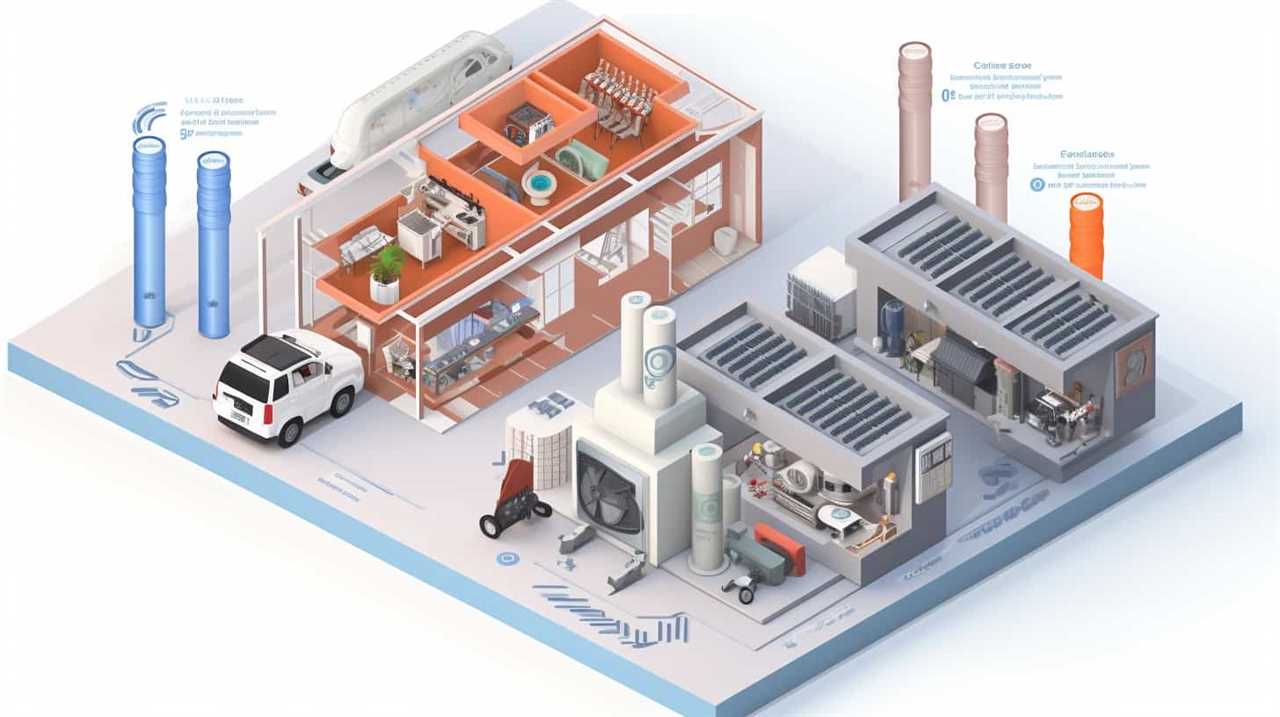
Sizing and Capacity Considerations for Energy Efficiency
To ensure optimal energy efficiency, it’s important to carefully consider the sizing and capacity of the heat pump. Choosing the right size and capacity is crucial in achieving maximum efficiency and performance. Here are three key factors to consider when sizing and selecting a heat pump for energy efficiency:
-
Load Calculation: Conduct a thorough load calculation to determine the heating and cooling requirements of your space. This calculation takes into account factors such as insulation, windows, and square footage. By accurately assessing your needs, you can avoid oversizing or undersizing the heat pump, which can lead to inefficiency and increased energy consumption.
-
Efficiency Ratings: Look for heat pumps with high Seasonal Energy Efficiency Ratio (SEER) and Heating Seasonal Performance Factor (HSPF) ratings. Higher ratings indicate greater energy efficiency and can significantly reduce your energy consumption.
-
Professional Installation and Regular Maintenance: Ensure that the heat pump is installed correctly by a qualified technician. Proper installation guarantees optimal performance and energy efficiency. Additionally, regular maintenance, such as cleaning or replacing filters, lubricating motors, and inspecting refrigerant levels, is essential to keep the heat pump operating efficiently.

Comparing Energy Efficiency of Different Heat Pump Types
As we compare the energy efficiency of different heat pump types, it’s important to consider both their performance and cost-effectiveness.
Evaluating cost effectiveness involves analyzing the initial purchase cost, installation expenses, and long-term energy savings. It’s crucial to choose a heat pump that offers the highest energy efficiency rating within your budget.
Comparing environmental impact is another key factor. Look for heat pumps that use environmentally friendly refrigerants and have low greenhouse gas emissions.
Additionally, consider the operational noise level and the heat pump’s durability and maintenance requirements.

Frequently Asked Questions
Are There Any Rebates or Incentives Available for Purchasing an Energy-Efficient Heat Pump?
There are rebates and incentives available for purchasing an energy-efficient heat pump. These can help offset the initial cost and encourage the adoption of more sustainable heating solutions.
How Often Should I Schedule Maintenance for My Energy-Efficient Heat Pump?
When it comes to scheduling maintenance for our energy-efficient heat pumps, we’ve found that regular check-ups every six months are crucial. This ensures optimal performance and allows us to troubleshoot common issues and provide tips for maximizing the lifespan of the pump.
Can I Use My Energy-Efficient Heat Pump for Both Heating and Cooling My Home?
Yes, you can use an energy-efficient heat pump for both heating and cooling your home. This is an installation that offers numerous benefits, such as increased energy efficiency and cost savings.
What Are the Potential Cost Savings Associated With Upgrading to an Energy-Efficient Heat Pump?
When upgrading to an energy-efficient heat pump, there are potential cost savings to consider. These savings come from the increased energy efficiency of the heat pump, reducing the amount of energy needed to heat and cool your home.

Are There Any Additional Accessories or Add-Ons That Can Enhance the Energy Efficiency of a Heat Pump?
There are several additional features and energy-saving options that can enhance the energy efficiency of a heat pump. These include smart thermostats, variable-speed motors, and advanced air filtration systems, among others.
Conclusion
In conclusion, selecting the most energy-efficient heat pump requires careful consideration of factors such as SEER and HSPF ratings, energy-saving features, and sizing and capacity requirements.
By comparing the energy efficiency of different heat pump types, one can make an informed decision that maximizes both energy savings and comfort.
It’s essential to prioritize efficiency to reduce environmental impact and achieve long-term cost savings.
